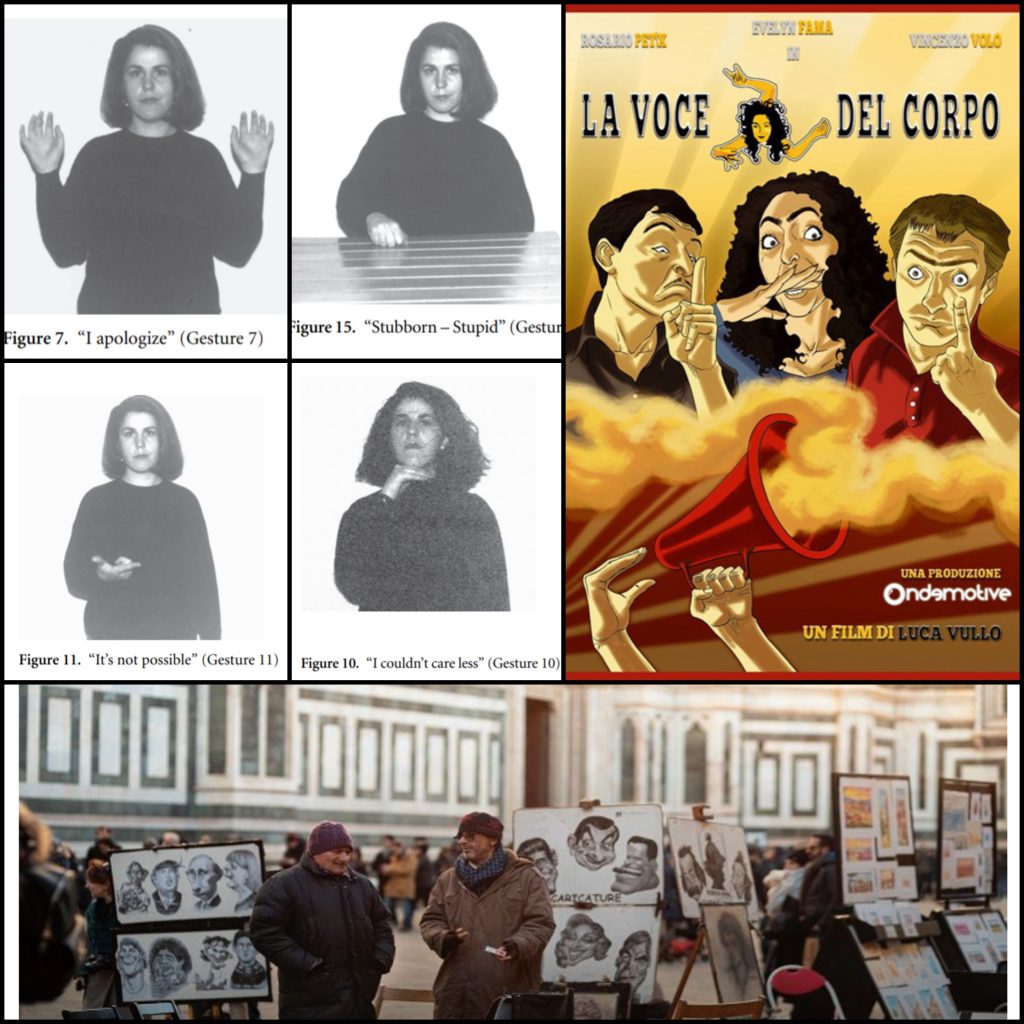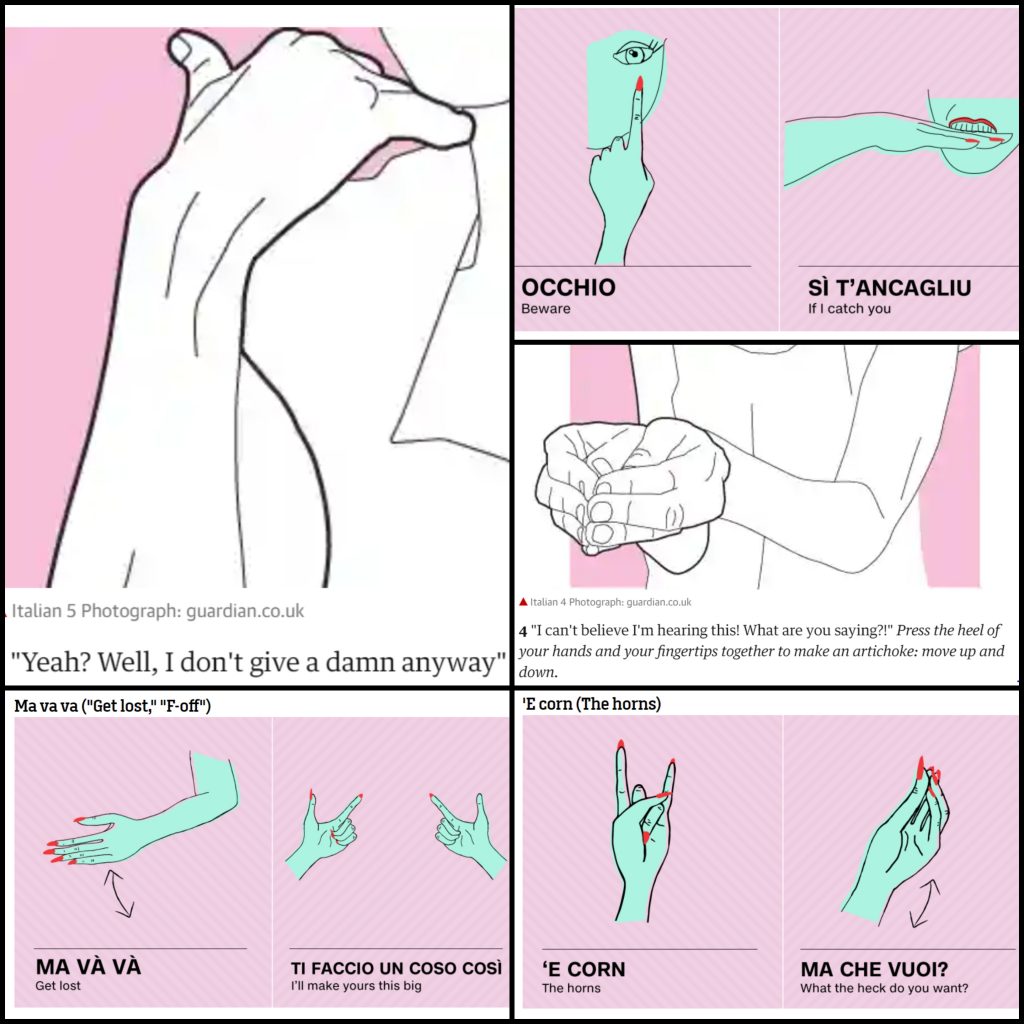
“Gli Italiano parlano con le mani”: A guide to Italian hand gesture
Italy is famous for its food, art and hand gestures. The famous hand gesture with pinched fingers has become a worldwide sign for “Italian”. But believe or not we all use hand gestures; it is part of human non-verbal communication. If you like to listen to rap and trap you’ll find a lot of hand gestures used to express secret codes or to emphasize the song’s message.
So, why are Italians famous for their “hand- language”?
Well, the “pinched finger” gesture is only one of the 250 hand gestures Italians use on a daily basis, according to a NYT article.
Italians are known for their extroverted way of communicating enthusiasm, thoughts and feelings. Hand gestures are part of Italian culture and identity. In Italy hand gestures are used to add or change the significance to oral phrases, to express feelings, intentions and emotions. But they can also have specific meanings that can only be expressed with “hand language”.
Italy is commonly thought of as an “emotional culture”; people like to express and externalize passion, expression and emotions. The psychological research of Isabella Poggi, Prof. of the Universita Tre for the Psychological Department, has shown that Italian hand gestures contribute to a better and more direct social communication. This has a great impact on how children develop socialization and emotional intelligence skills, because it enables people to express their emotions and read people more easily.
Same as verbal language, hand gestures also change according to territory and culture: northern Italians are stereotyped as talking more claimed and slow, while in south Italy you’ll expect people to talk faster, shout more often and talk with their hands. Even though we shouldn’t rely our knowledge on stereotypes, these exaggerated characteristics do usually have a historic reasoning behind them.
When did Italians start speaking with their hands?
Legend has it that hand gesture language started being used during the Greek and Roman colonization of Southern Italy. Because cities were more crowded and changes were happening fast due to commercialization, it was hard to seek people’s attention on the streets. Hand-talking was therefore related to oratory, public debates, theater and art. According to this story, Italian hand gestures are linked to art. Another theory points to hand gestures as being developed throughout the 14th and 19th century to protect Italian people from foreign invasions. Italians would use hand gestures as a secret code to defend themselves from Spanish, French and Austrian invasions.
Nowadays hand gestures are used everyday in Italy: walking on the streets and even on TV. Former Italian president Berlusconi used hand gestures often in public meetings, and If you watch an Italian football match you’ll see how players communicate using their hands. Funny fact: some football players are penalized when they insult other players using hand gestures.
How to talk with your hands: The complexity of Italian “hand language”
Most non-Italian native speakers cannot understand Italian hand gestures when they see them, but of course you can learn with time and practice. Luca Vullo, a Sycilian film-maker has created a show about Italian hand gestures: “La voce del corpo” (“The voice of the body”). In his show he explains that Italian hand gestures are a non-verbal language that has grammar and norms.
Hand gestures are considered by many specialists as either a complementary language that Italians speak, or as part of the Italian language. This is one of the main differences between universal non-verbal communication and Italian hand gestures: its complexity.
Regardless of considering Italians as “bilingual” or not, research has shown that Italian hand gestures are similar to many deaf sign languages due to its sophistication, expression and symbolism. Appart of having more than 250 meanings, Italian hand gestures have more than 40 types of handshakes, 33 locations and 6 orientations. The movement of the hands is shaped by direction, path, tension, impact, the parts of the hand that are used, tempo, speed and repetition.
It is almost impossible for a tourist to know all 250 Italian hand gestures, but here we will leave you some examples to learn and practice. Beware: many hand gestures are insults, but you can also communicate irony, metaphors, exaggerate what you are saying, or even flirt!
Did you like our article? If you want more, check out our previous article about International Youth Day.




